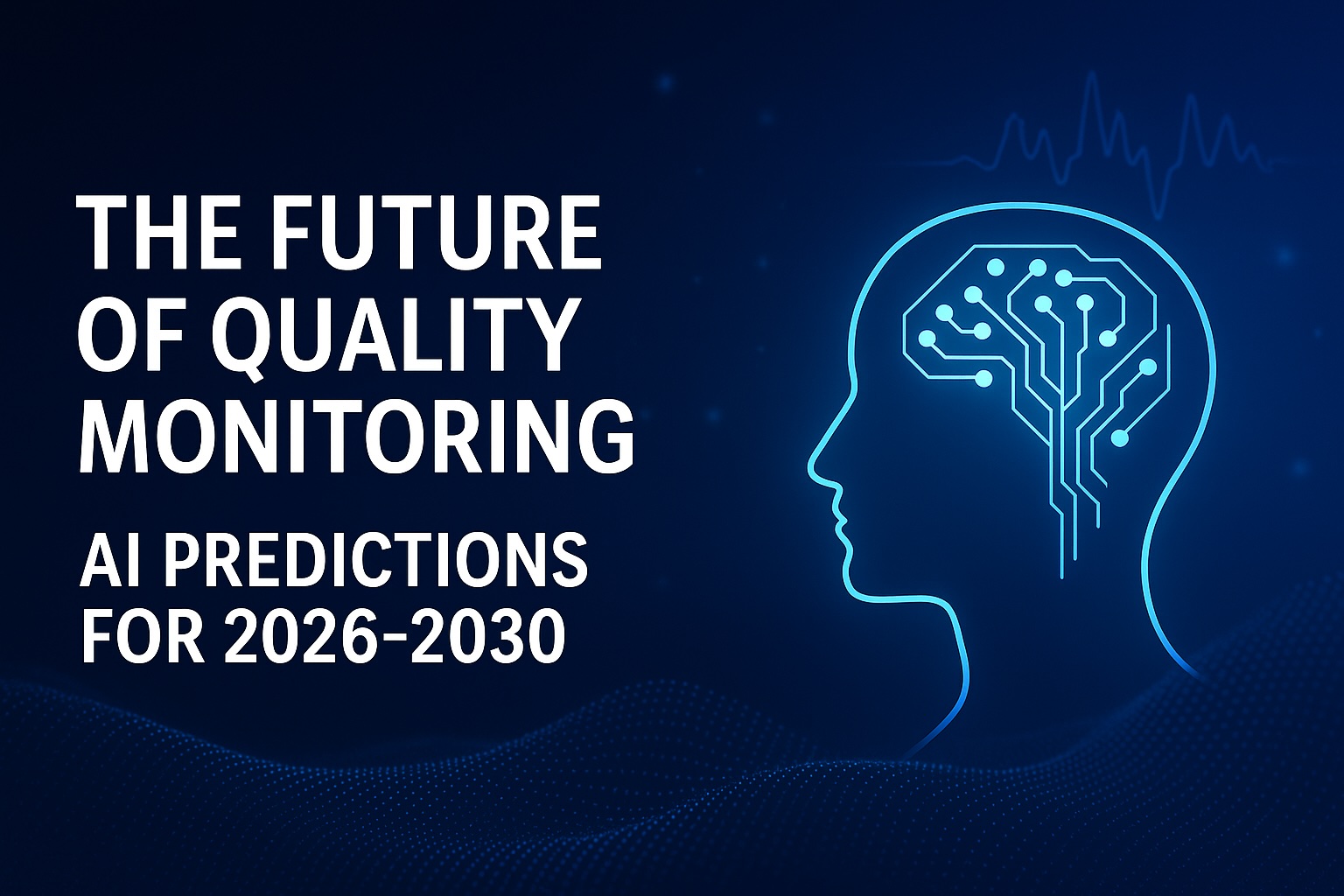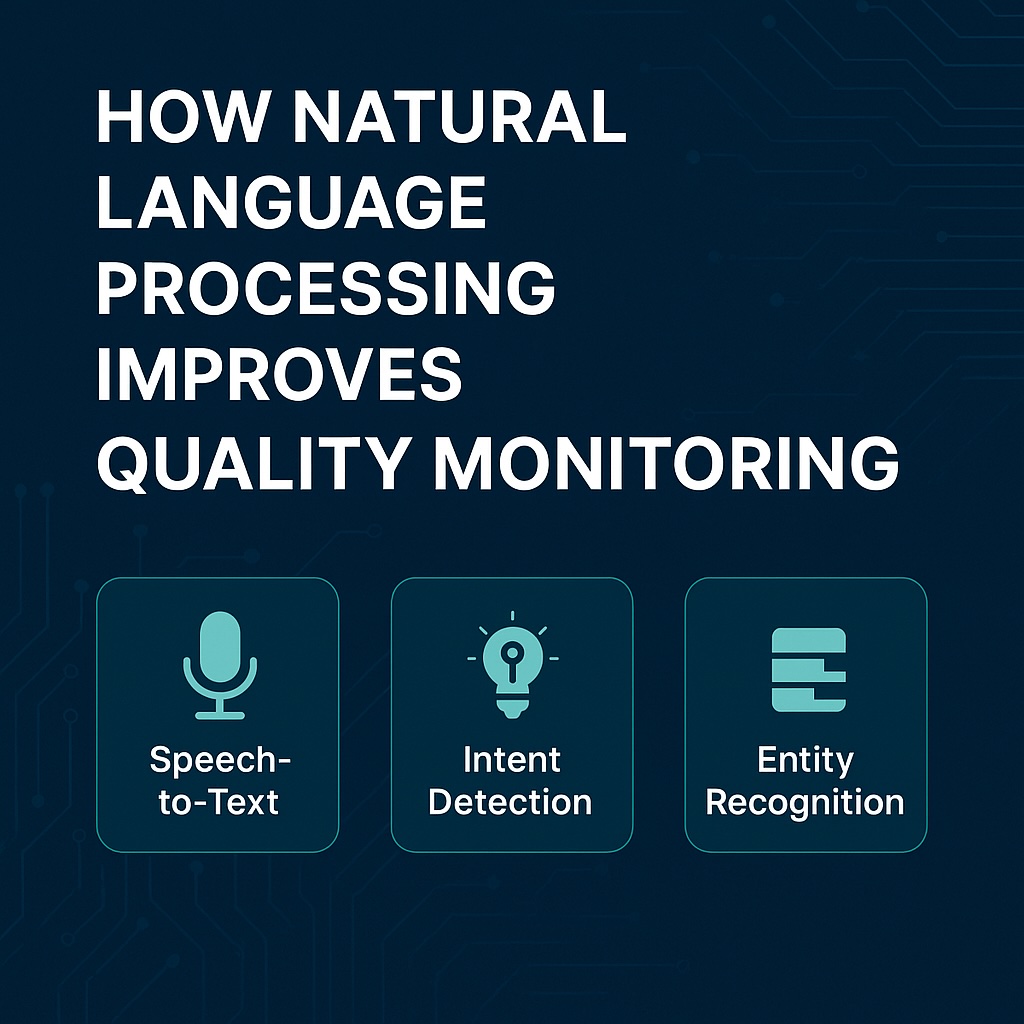
The Future of Quality Monitoring: AI Predictions for 2026–2030
Real-Time Coaching Becomes the Standard
By 2026, real-time coaching will replace traditional post-call feedback. Instead of waiting for analysts to review a conversation, AI will evaluate it as it happens. The system will listen, detect frustration or hesitation, and guide the agent instantly. It might suggest a more empathetic tone, a change of pace, or the right moment to reassure a customer. Supervisors will shift from reviewing random samples to orchestrating live improvement loops across every interaction. Coaching will become continuous, personalized, and immediate.
The impact of this shift is enormous. Onboarding will become faster, as new agents learn directly from contextual feedback. Performance gaps will close in real time. Quality will stop being a monthly KPI and become a living process, embedded in every call and message.
From Sampling to Predictive Quality
Between 2026 and 2030, the concept of sampling will fade away. AI will process all customer interactions automatically, allowing organizations to see what is happening at every moment. But more importantly, AI will start to predict what will happen next.
Predictive Quality will use historical data, behavioral signals, and emotional tone to forecast performance and risk. Instead of discovering quality issues after they occur, managers will anticipate them. They will know which agents might need additional coaching before errors appear, which customers are likely to churn, and which processes are becoming friction points. Quality Monitoring will no longer describe the past; it will shape the future. The QA function will evolve into an early-warning system — one that can identify trends days or even weeks before they escalate.
Voice Cloning and Simulation: The Next Training Frontier
The arrival of generative speech models and voice cloning will transform how teams prepare for customer interactions. AI will not only analyze real calls but simulate thousands of them, creating realistic training environments that replicate the nuances of human emotion.
Imagine a new agent practicing with AI-generated voices that sound genuinely frustrated, polite, or impatient. These simulations will help teams master empathy, tone, and timing before they even speak to a real customer. Organizations will be able to stress-test support scripts, evaluate new escalation procedures, and refine their communication style through endless, risk-free practice.
Voice cloning will also accelerate product launches and process changes. Before a new policy goes live, companies will simulate thousands of calls to predict how customers might react. Quality Monitoring will expand beyond measurement into experimentation — a continuous laboratory of customer behavior.
From Compliance to Connection
For decades, Quality Monitoring has focused on compliance: ensuring greetings are delivered, disclaimers are read, and procedures are followed. While that remains important, AI will automate most of it. The next frontier is emotional quality — the human connection at the heart of service.
By 2030, Quality Monitoring will evaluate how interactions make customers feel. Systems will measure empathy, trust, and satisfaction in real time, revealing not just whether an issue was solved, but whether the customer felt heard. Companies will compete on emotional consistency as much as operational excellence. The question will no longer be “Was the process correct?” but “Was the connection meaningful?”
This evolution will redefine what quality means. Emotional intelligence, once a human advantage, will become measurable, teachable, and improvable at scale.
Humans Stay in the Loop — But Differently
AI will not replace Quality Analysts; it will elevate them. Humans will remain essential to define ethical frameworks, validate model outputs, and ensure that the technology reflects brand values. The QA manager of tomorrow will be part data analyst, part behavior designer, and part coach. Their mission will shift from scoring individual interactions to shaping the human-AI collaboration that drives performance.
This redefinition will strengthen trust in automated systems. When humans oversee the logic behind AI decisions, companies can embrace automation without losing accountability. The future of Quality Monitoring will be powered by algorithms but guided by human judgment.
The Economics of Always-On Quality
The economic impact of AI-driven Quality Monitoring will be profound. What once required hundreds of hours of manual review will become instantaneous. The marginal cost of analyzing one additional interaction will drop to nearly zero. Organizations will monitor every conversation, across every channel and language, in real time.
This efficiency will redirect budgets away from repetitive scoring and toward strategic coaching, process redesign, and experience innovation. Quality will no longer be a cost center; it will be a continuous source of insight and competitive advantage.
By 2030, Quality Monitoring will no longer be a department hidden behind dashboards — it will be an always-on intelligence layer, embedded in the entire customer operation.
Preparing for the Next Era
The shift from reactive QA to predictive, emotion-aware monitoring is already underway. Between now and 2030, the organizations that succeed will be those that learn to interpret, not just measure, human emotion through data.
The question is not whether AI will redefine Quality Monitoring — it’s whether your company will be ready to use it strategically.
To evaluate your readiness for this transformation, take our Future Readiness Assessment and discover how prepared your operations are for the next generation of AI-driven Quality Monitoring.




